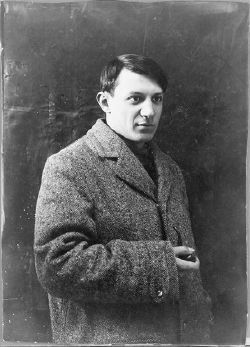Template: Popular article 12 15
From New World Encyclopedia
Revision as of 21:17, 8 December 2015 by Jennifer Tanabe (talk | contribs)
Popular Article: Pablo Picasso
Pablo Picasso (October 25, 1881 – April 8, 1973) was a Spanish painter and sculptor. One of the most recognized figures in twentieth century art, he is best known as the co-founder, along with Georges Braque, of cubism.
Cubism is perhaps the quintessential modernist artist movement. In cubist artworks, objects are broken up, analyzed, and re-assembled in an abstracted form—instead of depicting objects from one viewpoint, the artist depicts the subject from a multitude of viewpoints to present the piece in a greater context. Often the surfaces intersect at seemingly random angles presenting no coherent sense of depth. The background and object (or figure) planes interpenetrate one another to create the ambiguous shallow space characteristic of cubism. The larger cultural significance of cubism pertains to the disintegration of a unified sense of the world that had pervaded European Christian culture prior to the shock of World War I.
While Picasso's influence on twentieth century art is unquestionable, the lasting significance of the deconstruction of form and meaning implicit in his art remains in question. Representational art, dating to humankind's prehistory, suggests continuity and the legitimate and coherent place of human beings within the sphere of nature. Critics have remarked that the discontinuity represented by Picasso's art reflected not only the anomie of modern life, but also the artist's own degraded moral sensibility.